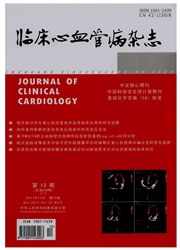

 中文摘要:
中文摘要:
目的:探讨疱疹病毒感染是否通过与胆固醇代谢负反馈途径中的固醇调节元件结合蛋白(SREBP)、SREBP切割激活蛋白(SCAP)及其靶基因LDL受体的相互作用而改变胆固醇代谢的平衡。方法:以高脂饮食喂养C57BL小鼠联合腹腔注射小鼠疱疹病毒(MHV-68)14周后,检测血清脂质的变化,对小鼠主动脉行冷冻切片油红O染色,并检测胆固醇负反馈途径各基因的mRNA转录和表达情况。结果:与单纯高脂饮食喂养的小鼠比较,在MHV-68感染联合高脂饮食喂养的C57BL小鼠中,血清脂质水平显著下降,而肝脏组织胆固醇水平显著升高,油红O染色发现脂质条纹的形成,荧光定量RT-PCR结果提示胆固醇负反馈途径的关键基因SCAP,SREBP和LDL受体基因转录水平显著升高,免疫组织化学提示上述基因表达增强。结论:疱疹病毒感染造成的炎症在高脂的基础上有可能进一步促进脂质代谢紊乱,这可能与胆固醇负反馈途径SCAP基因在炎症状态下失抑制,导致胆固醇摄入失控有关,同时炎症状态下血脂水平并不能真实反映体内脂负荷。
 英文摘要:
英文摘要:
Objective: To investigate whether virus infection fundamentally modified cholesterol homeostasis by changing expression of cholesterol sensor SCAP and its targeting gene LDL receptor. Method:C57BL mice on high cholesterol diet were treated with murine herpesvirus-68 (MHV-68) by abdominal injection for 14 weeks. Lipid profile in plasma was measured. TC, free cholesterol, and LDL cholesterol in liver and vessels were examined by enzymatic assay and Oil Red O staining. The mRNA expression of LDL receptor, SREBP2 and SCAP were quanti- fied by real-time reverse-transcriptase PCR. The protein levels were examined by western blotting and immunohis-tochemistry. Result:Persisted viral infection in mice on high cholesterol diet resulted in markedly decreased LDL cholesterol levels in plasma but increased level in liver. Furthermore, frozen sectioning of aorta roots demonstrated the formation of fatty streak. Real-time PCR and immunohistochemistry assay revealed the elevated mRNA and protein expression from the genes including LDL receptor, SCAP and SREBP2. Conclusion:MHV-68 infection cau-ses cholesterol redistribution from plasma to tissue compartment which may be a new pathway for lipid-mediated tissue injuries. The plasma cholesterol levels may not reflect the lipid burden of tissues and organs.
 同期刊论文项目
同期刊论文项目
 同项目期刊论文
同项目期刊论文
 Sirolimus modifies cholesterol Homeostasis in hepatic cells: A potential molecular mechanism for Sir
Sirolimus modifies cholesterol Homeostasis in hepatic cells: A potential molecular mechanism for Sir Inflammatory cytokines disrupt LDL-receptor feedback regulation and cause statin resistance: a compa
Inflammatory cytokines disrupt LDL-receptor feedback regulation and cause statin resistance: a compa Mechanisms of dysregulation of low-density lipoprotein receptor expression in HepG2 cells induced by
Mechanisms of dysregulation of low-density lipoprotein receptor expression in HepG2 cells induced by Inflammatory stress exacerbates lipid accumulation in hepatic cells and fatty livers of apolipoprote
Inflammatory stress exacerbates lipid accumulation in hepatic cells and fatty livers of apolipoprote 期刊信息
期刊信息
